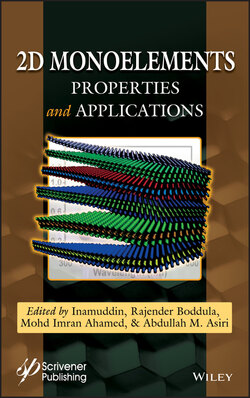Читать книгу 2D Monoelements - Группа авторов - Страница 15
1.2.1.1 Top-Down Approaches
ОглавлениеThe mechanical exfoliation is an effective widely used method for cleaving 3D materials from mutilayers to some layers and then to isolate a single layer [34]. Graphene monolayer, for example, has been isolated from graphite simply by using adhesive tape [35, 36].
Monolayer, bi- and tri-BP sheets were successfully exfoliated using micromechanical cleavage of 3D BP with PDMS in 2014. This method was carried out using an adhesive tape in three steps.
First, the exfoliated phosphorene layers were transferred to PMMA/PVA (polymethyl methacrylate/Polyvinyl Alcohol) composites, and then, the resulting layers with the composites were moved to a SiN substrate with a thickness of 200 nm. Several chemicals are used to separate the obtained specimens from the PMMA/PVA composites and to ensure that no more scotch tapes was left [37]. Despite the success of the mechanical exfoliation process, it was found that it was not scalable and hence limited to be used in academic laboratories for fundamental studies. Thus, to obtain a phosphorene sheet, a more efficient manufacturing process has been introduced. In particular, an Ar+ plasma was used to produce monolayer phosphorene through thermal ablation. This process provides an improved means of controlling the phosphorene thickness, unlike it is still challenging for mass production [38, 39].
The interesting technique to fabricate large quantities of exfoliated phosphorene is the liquid phase preparation. The solution-based phosphorene synthesis is placed into the BP interlayers which enlarge the distance and allows the exfoliation. This approach is widely used to manufacture several 2D and 3D materials that have shown good performance in dispositive [40].
